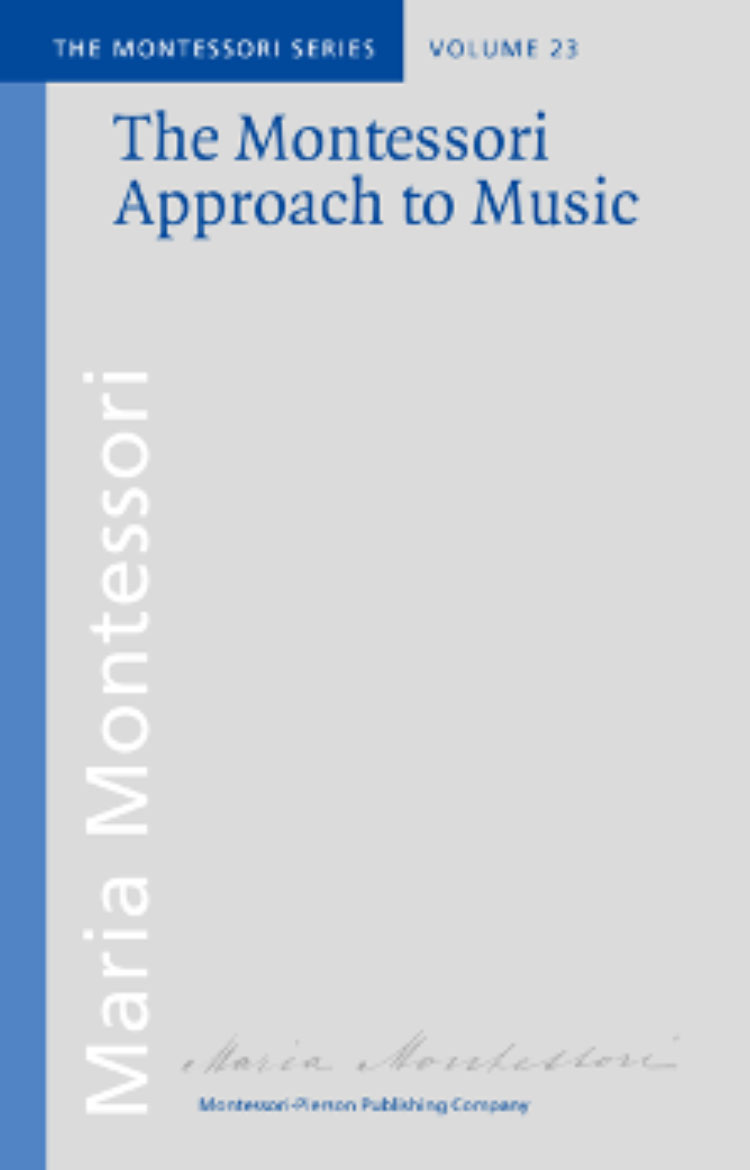“It is easy to find the identities with the colour tablets, because the colours contrast so vividly. This is a path which we throw open – very easy. But it is a scientific method. The child has seen many colours in the environment, but we give three elementary colours as a guide to his scientific observation of colour.
”
Maria Montessori
The Montessori Approach to Music, p. 11
“We have sounds of the bells. We try in the case of each sound to find its�equal. This we call pairing. I might do an exercise by mixing them all up�and then pairing them. This is a search we carry out. It is possible to seek�out in a number of bells the two which correspond directly. There is no�need for preparation, anybody can begin this; this is only a gradation of�sound.
”
“To make the hearing of music an intelligent act and not like the mechanical process, which appears when children read, in loud monotone, books which they cannot understand and of the meaning of which they have no idea, preparatory exercises are required. We get this preparation through various exercises in the audition of various scales for the recognition of key, and in exercises on the interpretation of rhythm.
”
Maria Montessori
The Montessori Approach to Music, p. 73
“When the children walk to the rhythm, continuing on the line, it reminds us of the motion of the earth around its axis.
”
Maria Montessori
The Montessori Approach to Music, p. 39
“Reading music is like reading words. It begins when by presenting something written we are capable of understanding it and representing it in sounds. It is a mysterious thing like the matter of the alphabet; only here we have a musical sound to correspond to what is written; these are therefore exercises of reading. This fact is independent of the nature of the instrument; the music that is read can be played on the bells or on any other instrument.
”
Maria Montessori
The Montessori Approach to Music, p. 37
“It is through movement that the child arrives at understanding music. It is not only by playing and singing for the child that this happens; he must understand it by his own movements.
”
Maria Montessori
The Montessori Approach to Music, p. 33
“It is movement that interests the child in music, and it is by movement that the very tiny child can arrive at understanding music with considerable delicacy.
”
Maria Montessori
The Montessori Approach to Music, p. 32
“The most difficult thing, as teachers know, is not to move. It is more difficult not to move than to move well; for this reason, children must have much practice in moving well and in controlling their motions before exercising the will to successfully inhibit every voluntary movement.
”
Maria Montessori
The Montessori Approach to Music, p. 23
“When we give the child the possibility to fix his attention in an orderly fashion upon some objects which also permit a motor exercise, we give such clearness to the mind of the child. This clearness gives a new fascination and a new impulse, a new mode of observation.
”
Maria Montessori
The Montessori Approach to Music, p. 19
“If someone followed small children in their first years, he would notice that they observe fine noises which come from afar, for example, the bark of a dog which they are accustomed to hearing, or the noise of a motor bicycle far away, or of a trumpet in the distance. There is no doubt that the children notice music; who does not know of the pleasure with which children follow�musicians?
”
Maria Montessori
The Montessori Approach to Music, p. 19
“With the sound boxes, I find two sounds which are identical; it does not matter whether they are quiet sounds or loud ones. I can seek out in the environment similar sounds and I have an infallible guide. I have a rule for my observation. I have the beginning of my scientific observation.
”
Maria Montessori
The Montessori Approach to Music, p. 10-11
“We tend to think that the realm of music is the privileged area of some happy few. Experience has taught us, however, that if offered the right kind of education from a very early age onwards, anyone is capable of entering the realm of music. Not everyone has the talent to practise music at an artistic level, or create new work, but everyone can reach a stage where they can enjoy it.
”
Maria Montessori
The Montessori Approach to Music, p. 1

